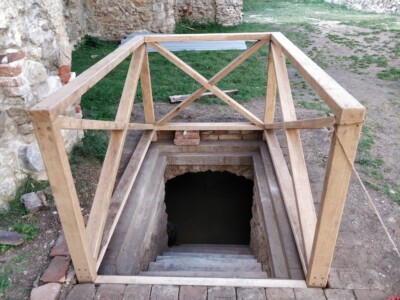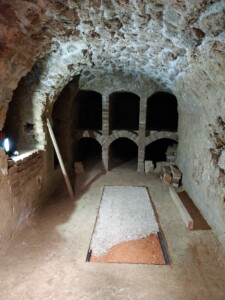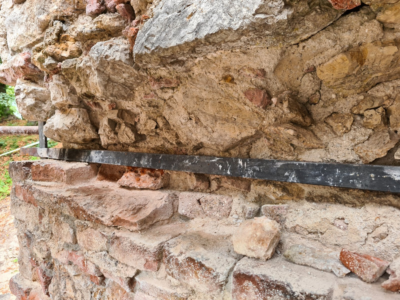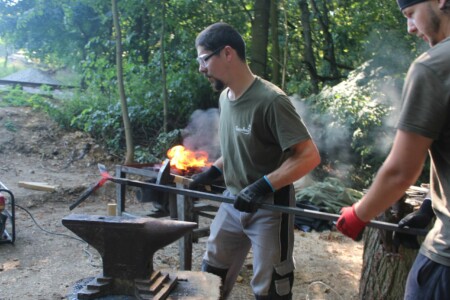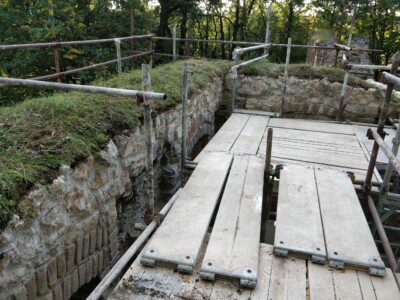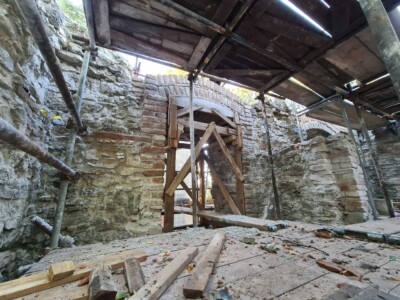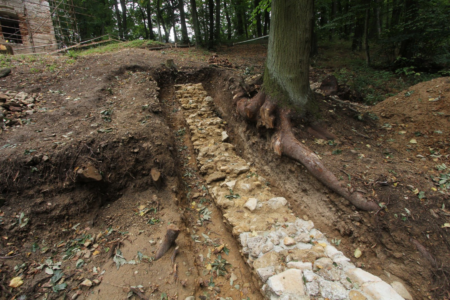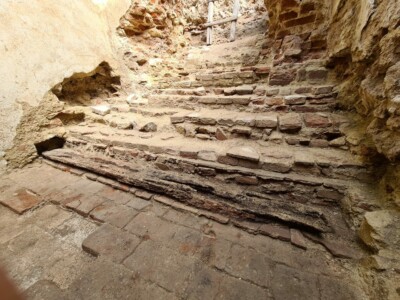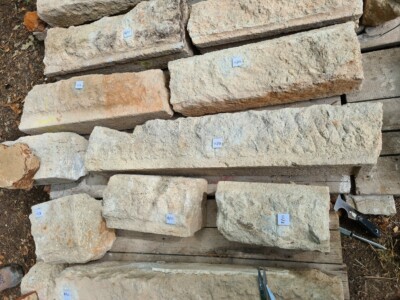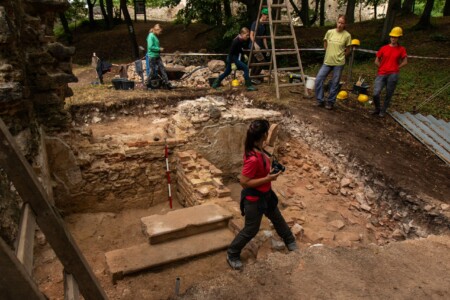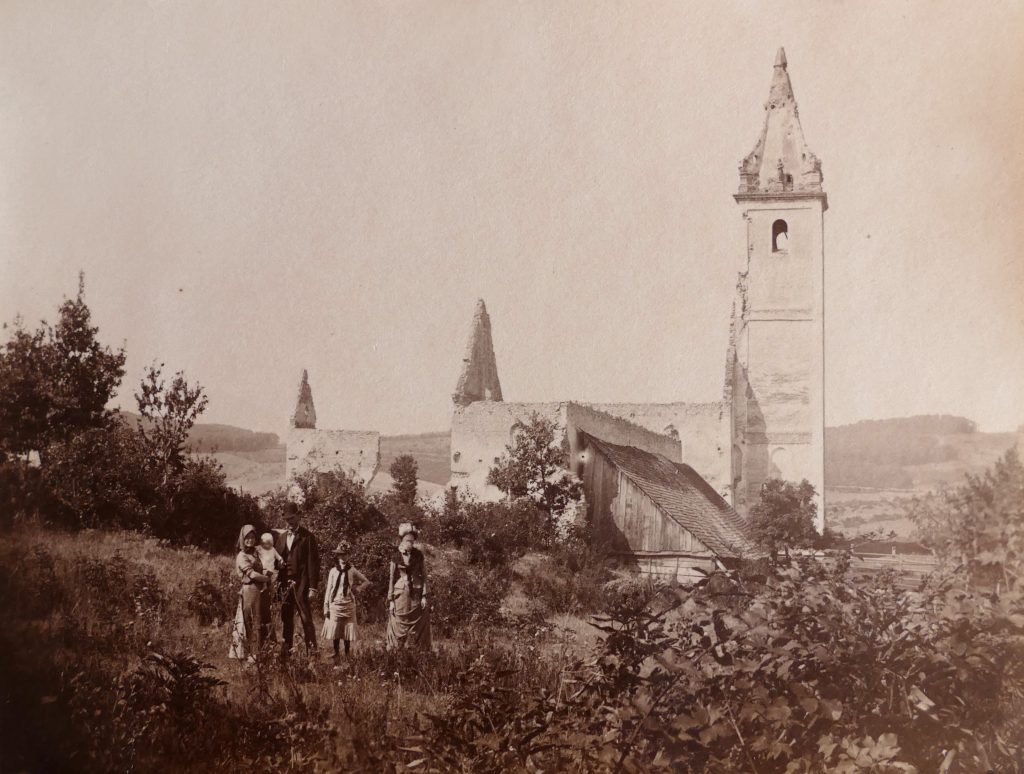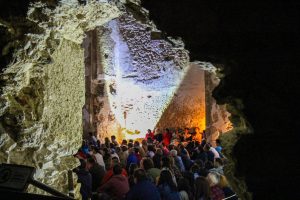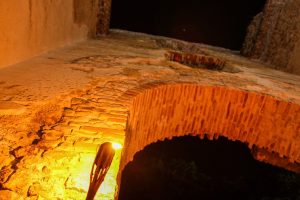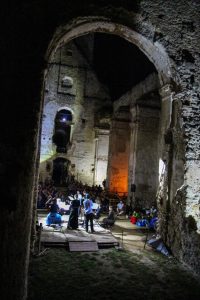Author: Orwik
Work in the 2020 season
During the 2020 season, we continued working on the archeology exploration, and monastery conservation started the previous year. Despite the pandemic, work progressed at a good pace.
Archeological research was carried out in three excavation sites. We uncovered the cloister garth’s SE and SW corner and continued exposing the monastery garden’s fencing wall.
We mostly worked on the conservation of the SE corner of the monastery. We mortar pointed the masonry, reattached the original, partially detached plasters, masoned the top part of the walls, and then laid a grass layer on them. We added three window niches for the wall stability and continued with the original static system’s reconstruction. We inserted hand-hewn oak beams into the places where they originally were in the perimeter walls. We contracted the cloister wings with iron rods, which used to reduce strain on the walls under the vaults’ load.
We have made a presentation of the tomb shaft situated on the floor in the crypt. For the safety of our visitors, we’ve also added a railing around the crypt’s entrance.
Oldest photo of Katarínka found
In 2018, a real gem for our organization was discovered. In the Slovak National Archive in Bratislava, the oldest surviving photograph (so far) of Katarínka, dated 1904, was discovered. The photo is located in the photo album of the Pálffy family, who are probably also present in the photo itself. It is an irreplaceable source of information for our organization, as the photograph provided us with new, previously unknown facts about Katarínka. This photograph was first presented internally to members and associates of our organization O.Z. Katarínka, during the celebrations of the 400th anniversary of Katarínka. But now we are making it available to the general public for the first time.
The timing of the photo (1904) is really fortunate for us. This is because only a year later after the photo was taken, in 1905, the four statues which were originally placed at the top of the tower, were thrown down from the top of the tower into piles of wood and hay and then transported to the vicinity of the Pálffy tomb at the cemetery in Smolenice, where they still can be found to this very day. So thanks to this photo, we can now see that the statues were not on the corners of the tower, as originally thought, but were located in the middle of its walls instead.
These three interesting parts of Katarínka can be seen on the photo, which are not standing anymore:
- Brick roof of the tower with holes and decorative volutes on the edges.
- Gable of the presbytery on the far left of the photo and the eastern wall of the presbytery with the imprint of the monastery roof. Today, nothing of them stands.
- The northern wall of the monastery (to which wooden stables are added on the photo) – only a 1 meter high wall remains.
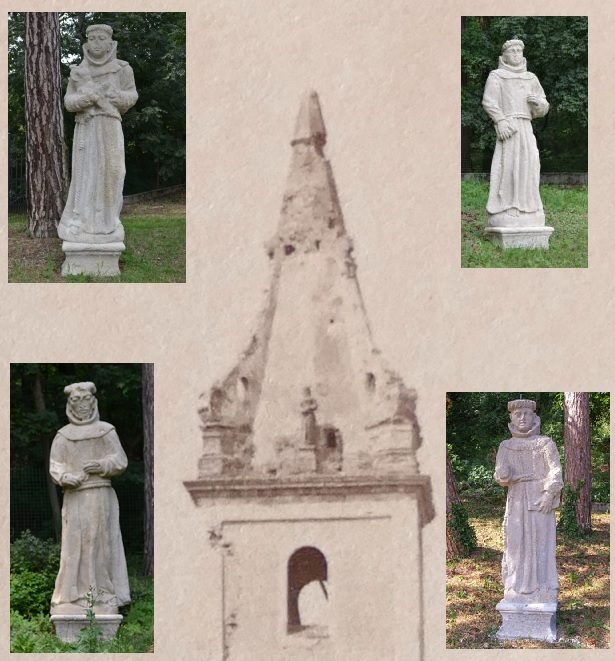
Originally it was also assumed that the shape of the roof was completely different. One of the assumptions was the so-called pear-shaped roof, like most churches in Trnava have, but these ideas were wrong. Thanks to this photograph, it is possible to update the digital visualizations of what the whole church and monastery might have looked like. The photograph also provides administrative advantages in case of possible reconstruction of these no longer standing parts, as the authorities usually have problems allowing the reconstruction of parts where it is not fully documented how they originally appeared. However, the reconstruction of the roof is not considered at the moment and probably even in the future.
Katarínka thanks Tomáš Haviar for providing the photo.
For extra curious, you can download the photo in full size, here on this link.
Night of Castles and Ruins 2019
On Saturday 16 August 2019 in the evening, about 300 people attended the traditional event Night of Castles and Ruins. 25 years ago, first volunteers came to Katarínka, so also this event was a part of celebration of this anniversary.
The program started with a Holy Mass celebrated by Branislav Popelka („Beren“) and the parish priest from Dechtice Miroslav Kováč. Music during the Holy Mass was performed by the volunteer band s. Katerína. After the Mass, the traditional refreshment was offered to the visitors – bread slices with pork grease and onion, as well as tea.
After a short break, when it got already dark, the program continued with a concert of the ZOE chamber orchestra. The orchestra consisted of 8 musicians with mostly bowed string instruments, but also a harpsichord was present. The orchestra played for almost one hour and the concert consisted mainly from baroque pieces.
After the concert, a surprise was awaiting the visitors. For the first time, visitors could enter the biggest crypt in the church with a trained guide. Until last year, archaeologic research with participation of our volunteers was being carried out in the crypt.
In addition, visitors could enjoy the night atmosphere at Katarínka with special night lightning. Young volunteers guided them around the walls and presented them not only the monastery ruin and its history, but also the work of volunteers and their way of life during summer camps.


